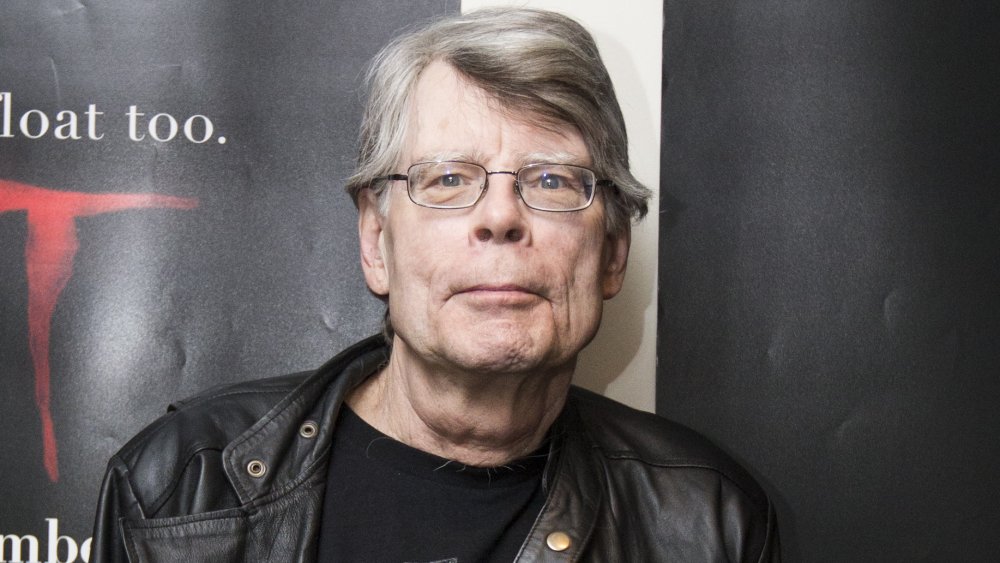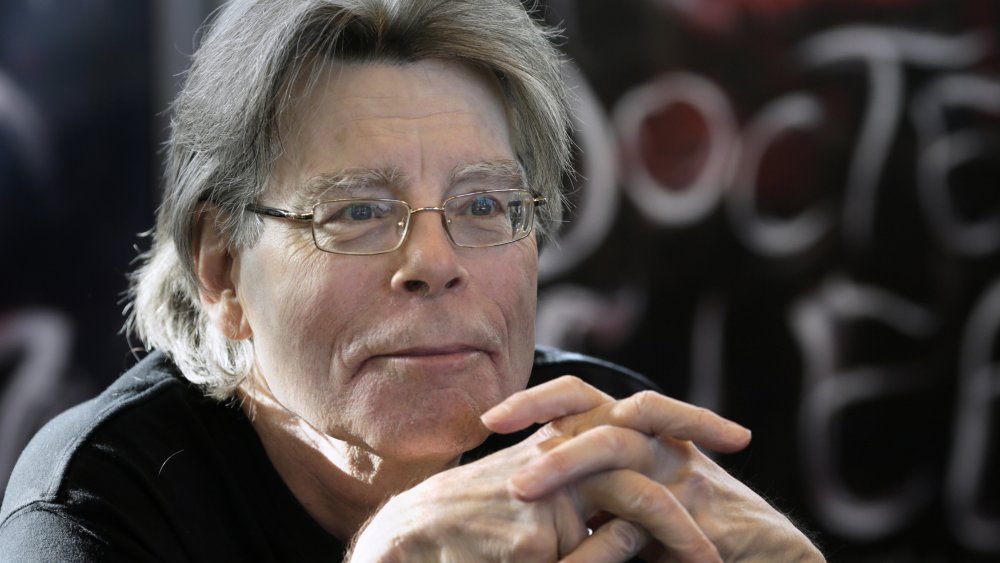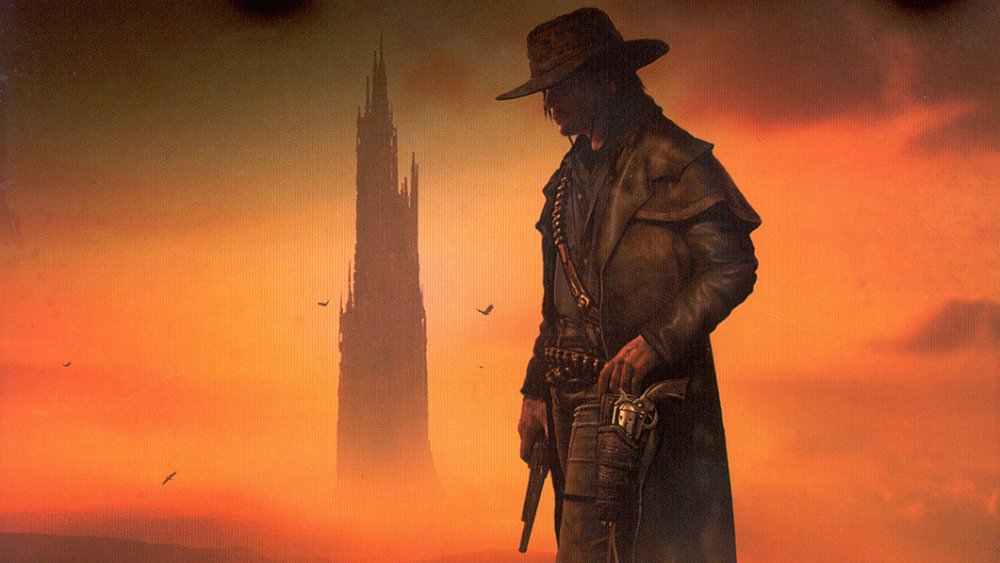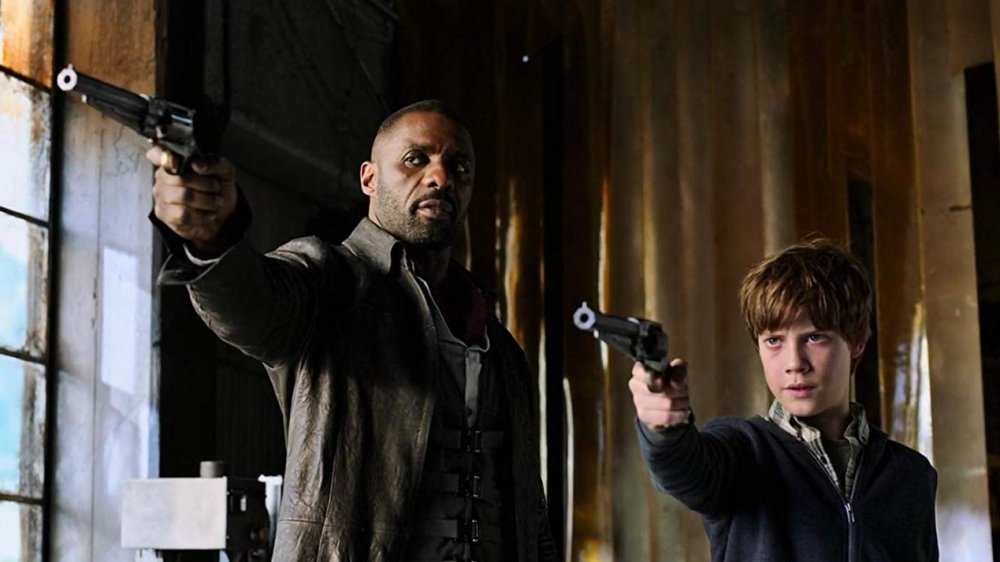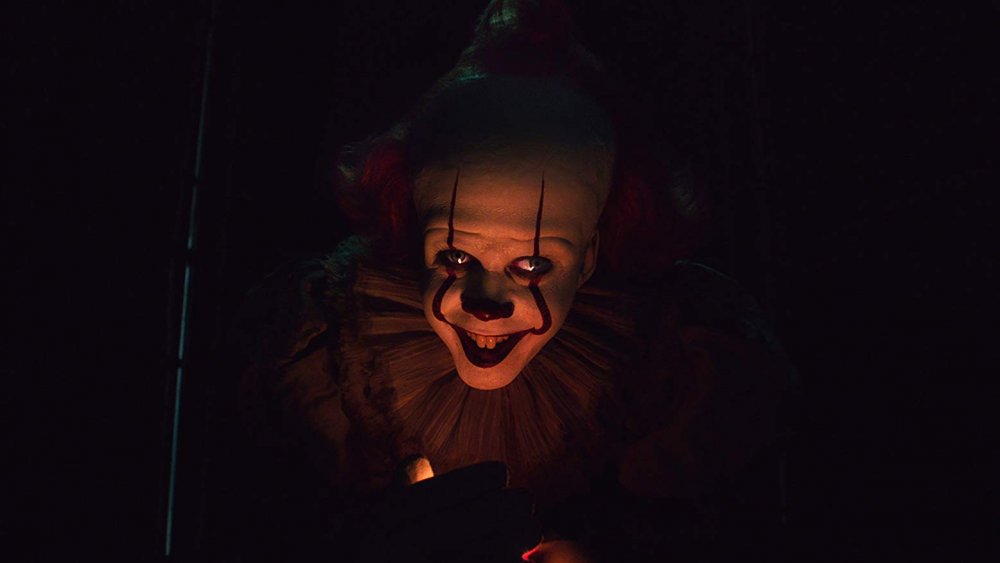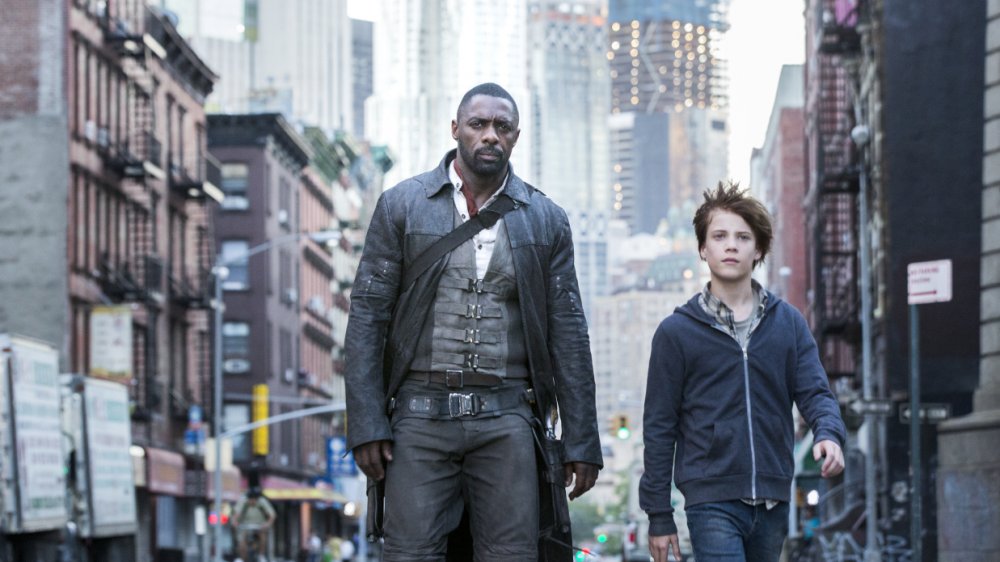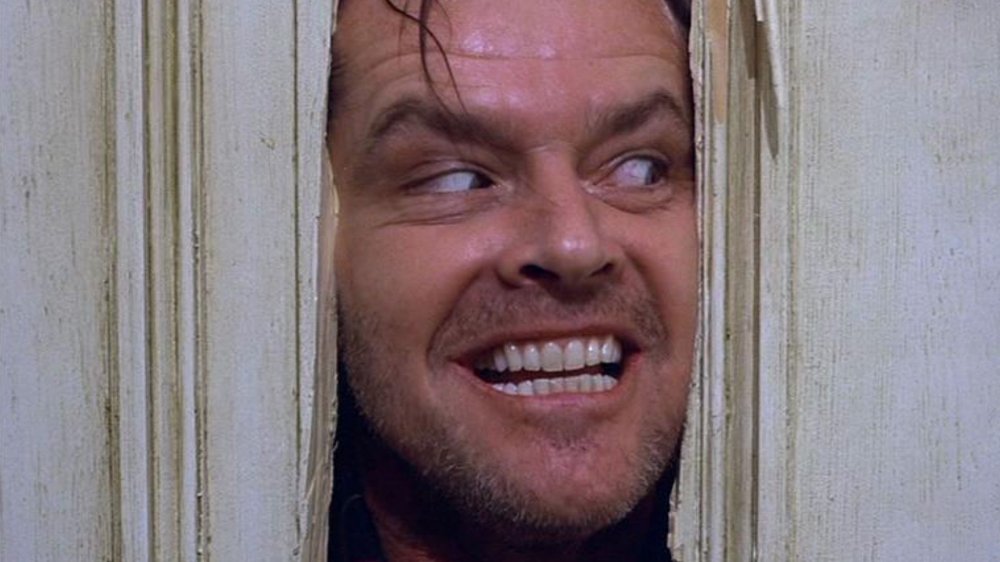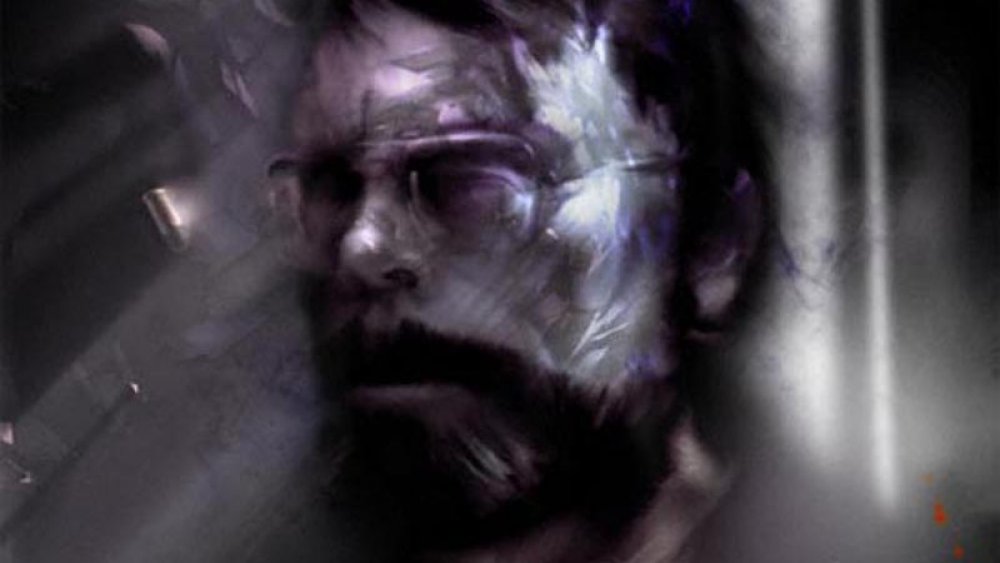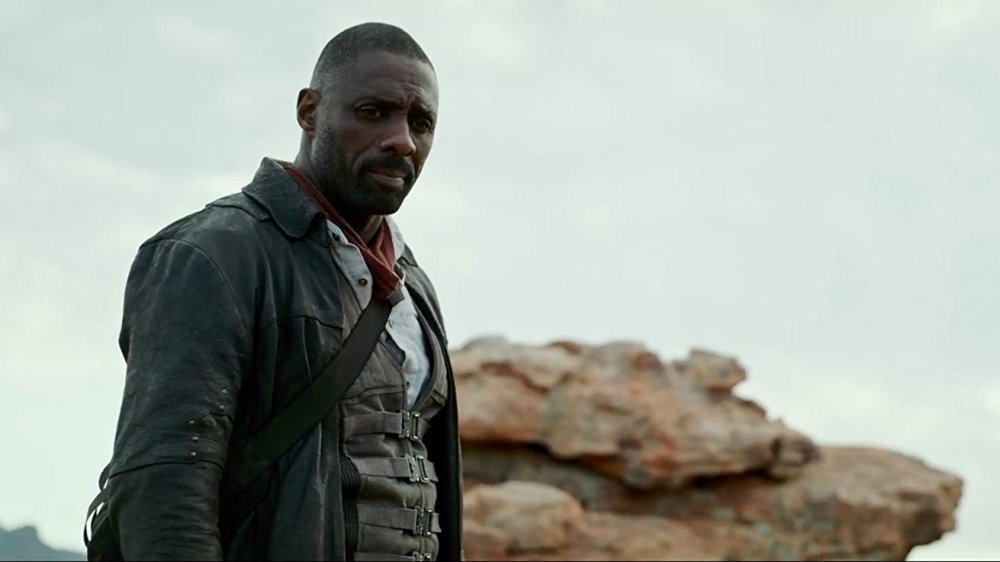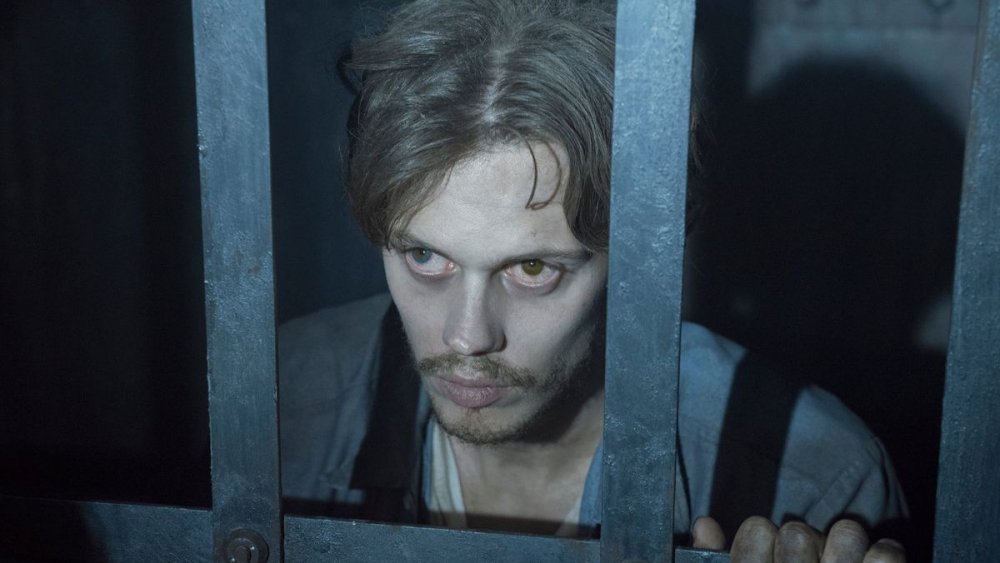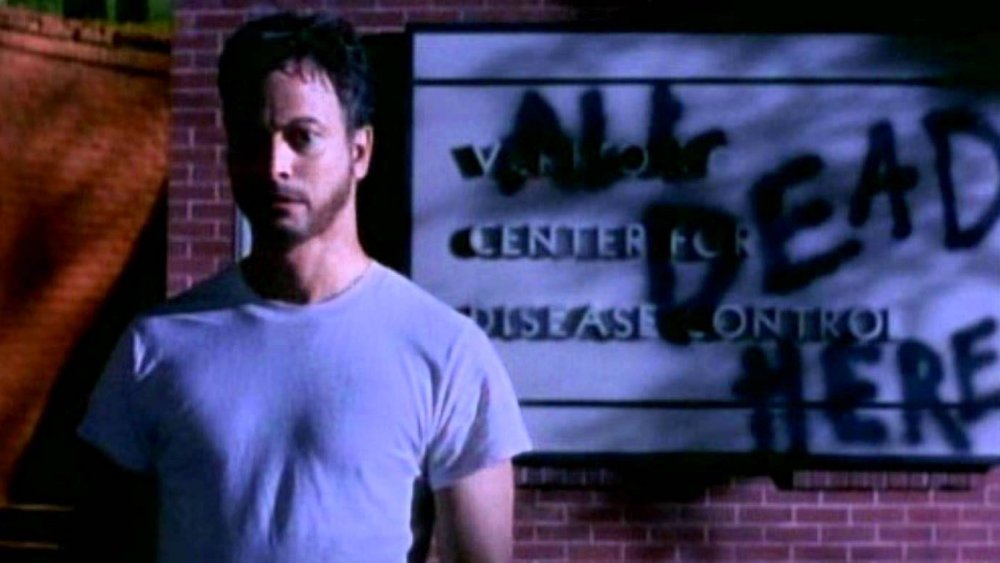The Stephen King Multiverse Explained
Stephen King is one of the most successful and widely read authors of his time, one of those rare writers whose fame has managed to expand beyond the bounds of the literary and into the realm of pure pop culture legend. His work now includes more than 60 novels, dozens of short stories, and a few screenplays, and almost all of it has been or soon will be adapted to the screen in some form. King's work has permeated pop culture in a way most authors only dream about, and that's thanks in part to the tremendous depth he gives each and every story.
King's attention to detail, and his tendency to keep throwing callbacks and knowing winks into his tales year after year, has given birth to more than just dozens of popular books. He's created a full-on multiverse, much of it centered around his Dark Tower novels, which includes a potentially limitless number of alternate dimensions, pocket realities, and gateways between worlds and stories. It's a creation that's become so vast and so flexible that even some diehard King fans haven't fully explored it, but we're going to do our best. Here's a brief explanation of the King multiverse, from its origins to its various realities.
Origins of the Stephen King multiverse in the real world
Stephen King began building an alternate version of our world in a pronounced way almost immediately in his novels, creating fictional towns like Jerusalem's Lot and Castle Rock in some of his earliest works. The interconnectivity between his novels started to blossom early, including a reference to Carrie as a work a character is familiar with in The Dead Zone.
However, it was his ongoing work on The Dark Tower series — a massive, seven-book (plus one spinoff) dark fantasy epic involving a multiversal journey to save all of existence — that caused King to really embrace the sense of multiple, and potentially infinite, universes in his work. The more he worked on that saga, the more he came to realize that much of his work was connected in some way or another.
"I am coming to understand that Roland's world (or worlds) actually contains all the others of my making," King wrote in a foreword to the fourth Dark Tower volume, Wizard and Glass, referencing the series' protagonist. And as he reached the later volumes in the Tower series, King embraced this multiversal concept more definitively and laid out a kind of cosmology for his various worlds in which a great many of them directly connect, with the Tower novels acting as a kind of nexus.
Origins of the Stephen King multiverse in fiction
There's no one Stephen King story that conveniently and clearly lays out every aspect of his multiverse or its origins, but a careful reader can piece together the various elements that came together to make this multiverse a reality. As with the Christian creation story, existence of King's multiverse began with a darkness, known as the Prim, and from it came a creator, a being called Gan, whose name is first invoked in The Dark Tower series.
Gan is the creator of All-World, the reality in which much of The Dark Tower takes place, but he's also the creator of all worlds, having built the seemingly infinite web of worlds that form King's multiverse. He also created the Dark Tower, a massive structure that exists physically in All-World and symbolically in all dimensions, which serves as a linchpin for all reality. In the final volume of The Dark Tower, King's hero, Roland Deschain, begins to believe that the Tower is actually a physical manifestation of Gan in some way. The Tower's narrative focuses on Roland's quest to reach the titular structure and protect it from the dark forces of the Crimson King, Gan's opposite, who hopes to bring the Tower down and usher in the destruction of all realities.
Together, Gan, the Tower, and the Crimson King form the core of King's multiverse.
Primal forces are at play
King's multiverse emerged gradually over the course of his career, which means various concepts and key players are often not present for long stretches, and King himself has only retroactively inducted certain works into his multiverse. Still, as the multiverse came together more clearly in King's imagination, he laid out certain key concepts that function as primal forces within the various stories.
Chief among these forces is ka, a word that appears in various incarnations throughout the Dark Tower cycle. Ka is a word from the High Speech of Roland's people, and it essentially means destiny or fate, a great force which moves people in the way they're supposed to go. Roland and his group of friends are called a "ka-tet," a group bound together by a shared fate.
Then there are the forces of the Random and the Purpose, which are sometimes also called the Red and the White, respectively. Random and Purpose are laid out most clearly in King's novel Insomnia, and they're revealed to exist as contrasting forces within the multiverse, like red and black pieces on a checkerboard. Broadly speaking, Purpose stands for order and good, and Random stands for chaos and evil. Most people are aligned clearly with one force or the other, though there are some unassigned beings which exist in between such forces.
The spaces between realms
As King's fiction career expanded to cover decades of work and dozens of novels, so too did his fictional multiverse comprising numerous different worlds. In the realm of The Dark Tower, this multiverse is vast enough to include potentially infinite worlds, and that level of vastness means there also must be space between the worlds. The concept of characters moving from world to world is explored in detail throughout The Dark Tower cycle, as well as King's novels The Talisman and Black House, which he co-wrote with Peter Straub. Black House in particular involves the exploration of someone "going todash" or moving into the "todash space," a void between the worlds.
The idea of a world between the worlds is further explored in King's novel IT, which retroactively became a part of the Dark Tower multiverse through the connection of the ancient turtle spirit known as Maturin. Maturin and the creature known as It both originate from a place called the Macroverse, which exists on a plane of reality outside the Earth of the novel. Spaces like todash and the Macroverse are home to various immensely powerful entities, and they've apparently even had a role in spawning the universe which contains King's more mainstream stories.
Keystone Earth is pretty key
In the first Dark Tower novel, The Gunslinger, Roland Deschain meets a young boy named Jake Chambers, who apparently came to All-World after dying on his own version of Earth. In The Drawing of the Three, the second Tower novel, Roland travels through a trio of magical doors that allows him access to that version of Earth, which has come to be known as "Keystone Earth" in the larger Tower mythos.
Keystone Earth is, in the overarching story of The Dark Tower, what we would call the "real world." Roland visits it at various times and through the eyes of various people, which helps him to gain knowledge of our world and how it works. Keystone Earth also has its own metaphysical representation of the Tower itself, which takes the form of a rose growing in a vacant lot in New York City. Over the course of the novels and certain other King stories, various agents of the Purpose and the Random work within Keystone Earth, and the Tower novels lay out various ways of accessing this realm, including magical artifacts.
The truth about mainstream Earth
Though Keystone Earth is by all appearances a fairly normal representation of the "real" world outside of the various supernatural events which take place there, it isn't the only "real world" depicted in King's fiction. Many of King's novels — including The Shining, IT, The Dead Zone, Carrie, and many others — appear to simply take place in a mainstream universe version of our Earth, separate from the Keystone Earth of the Tower novels.
This Earth was apparently spawned by Maturin the turtle, who vomited up our planet following a stomach ache. Maturin's presence as this world's creator is enough to connect it to the multiverse as a whole, but there are many other potential connections. For example, the creepy town of Derry pops up in 11/22/63. And there are a ton of references linking the standalone novels to the Dark Tower mythos. Characters like the monstrous Cujo and Paul Sheldon of Misery fame are all referenced in the series. Danny Torrance himself quotes The Dark Tower in The Shining sequel, Doctor Sleep. And then there's the mystical number "19," which appears in multiple King stories and gains importance in King's revised version of the first Dark Tower novel, The Gunslinger. The list of King connections goes on and on, and it never stops growing.
Metafictional connections in Stephen King's multiverse
There was a six-year gap between the publication of the fourth Dark Tower novel, Wizard and Glass, and the fifth novel in the series, Wolves of the Calla. In the midst of this gap, Stephen King nearly died when he was struck by a van while walking near his home in Maine in 1999. This near-death experience led to King's decision to add a new layer of metafiction to the Tower mythos, which included writing himself into the story as a fictional character.
In the sixth Tower novel, Song of Susannah, Roland and his ka-tet companion Eddie Dean actually meet King, who's become aware that dark forces seem to be conspiring to stop him from writing the rest of the Tower story. It's revealed that King is a conduit for the will of Gan, and that in writing the Dark Tower stories, he's in effect metafictionally feeding Roland the knowledge that he needs to go on with his quest. If this version of King dies, the quest for the Tower fails and the Crimson King wins. The van accident that nearly killed King in the real world is prevented on Keystone Earth when King is saved by Jake Chambers, allowing him to keep writing the story.
The neverending cycles
The first volume of The Dark Tower was published in 1982. The last volume in the main series, titled simply The Dark Tower, arrived more than 20 years later, in 2004. In the interevening two decades, King insisted to his readers that even he wasn't entirely sure how things would end, and he couldn't tell them even if he'd wanted to. When we finally did get the end, it proved more metaphysical than many fans could've imagined.
The Dark Tower ends with Roland reaching the Tower in triumph, then offers the reader a chance to close the book before a coda reveals that, as he reaches the top of the Tower, Roland enters a door marked with his own name and realizes he must start the quest over again. He's transported back to where the first book started, and though he has a brief understanding that he has come to the Tower countless times before, all of his memories quickly fade, replaced by the voice of Gan whispering that perhaps this time will be the final time.
So while we're left to interpret this ending for ourselves, King has essentially set up a scenario in which an eternal warrior must constantly quest to save his world and, by extension, the multiverse. It's a neverending cycle of journeying that keeps all the many worlds of this cosmology turning.
The multiverse in live-action
Most of Stephen King's novels and many of his short stories have been adapted for film and television at this point, but in the interest of self-contained storytelling, most of them have stayed away from any multiversal concepts. Even the IT adaptation that stretched across two installments in 2017 and 2019 avoided any real entanglements with the concept of the Macroverse, simply explaining that the titular creature arrived in Derry, Maine, untold eons earlier.
Of the many King adaptations, only The Dark Tower film adaptation and Castle Rock have really embraced the multiverse in a high-profile way so far. The Dark Tower film makes heavy use of characters journeying between All-World and Keystone Earth, while also introducing the Horn of Eld to Roland's wardrobe, implying that the film is actually a sequel to the novels, making it the next cycle of Roland's quest. And in the first season of Castle Rock, an anthology series centered around King's fictional town, the show introduces the multiverse as a key concept in that season's plot, implying that the TV version of Castle Rock is in an alternate reality distinct from the settings of various novels.
Other worlds in King's multiverse
Though The Dark Tower is the primary work through which King's multiverse is explored, and then there's the Keystone Earth and the "mainstream" world in which most of King's standalone novels take place, this still isn't the end of the many fictional alternate realities that King has dreamed up.
In some cases, we know we're dealing with an alternate reality simply because the world as we know it ends in those novels, as with the apocalyptic landscapes of both The Stand and Cell. In others, including Revival and Lisey's Story, King introduces alternate dimensions with no apparent connection to other multiversal realms. In The Talisman and Black House, King and Peter Straub introduced "the Territories," an alternate realm full of doppelgangers called "twinners." Then there's the novella Ur, which introduces a pink Kindle device that comes from a parallel universe and can look up information about any number of other universes, including one in which Hillary Clinton was elected president in 2008 and one where William Shakespeare wrote two more plays.
So, basically, the multiverse still isn't finished, and there may yet be even more strange connections and alternate worlds lurking in King's fiction.
